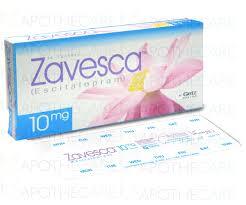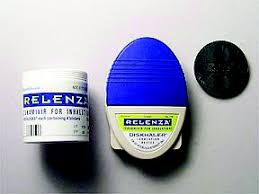Zostavax
Zostavax is specifically formulated to prevent herpes zoster, commonly known as shingles, in individuals aged 50 and above. It is not designed for the treatment of active shingles or postherpetic neuralgia (PHN).

Generic Designation:
Zoster Vaccine Live
Commercial Name:
Zostavax
Pharmaceutical Classification:
Vaccine (Live, Attenuated)
Mechanism of Action:
Zostavax comprises a live, attenuated variant of the varicella-zoster virus (VZV), the same pathogen responsible for chickenpox and shingles. The vaccine functions by:
– Enhancing the immune system’s ability to identify and combat the varicella-zoster virus.
– Strengthening immunity against the reactivation of the dormant virus within nerve tissues, thereby diminishing the likelihood of shingles development.
Dosage and Administration:
Dosage:
A singular 0.65 mL dose is administered subcutaneously.
Administration:
Typically, the vaccine is delivered in the upper arm (deltoid region) and should never be injected intramuscularly or intravenously.
Efficacy:
Zostavax is known to lower the risk of shingles by approximately 51% and the risk of postherpetic neuralgia (PHN) by 67%. While efficacy may diminish with age, it continues to offer substantial protection for older adults.
Side Effects:
Common Side Effects:
– Reactions at the injection site: Redness, pain, swelling, itching, or warmth.
– Headache
– Fatigue
– Fever
– Mild rash at the injection site.
Serious Side Effects:
– Allergic reactions: Swelling of the face or throat, difficulty breathing, hives.
– Herpes zoster-like rash: Although infrequent, this may occur if the attenuated virus reactivates.
– Severe injection site reactions: Pain or swelling that persists for several days.
Warnings and Precautions:
Live Virus: As Zostavax is a live vaccine, it should be administered with caution to individuals with compromised immune systems.
Not for Active Shingles Treatment: It is ineffective for treating existing shingles or PHN.
Avoid in Severe Immunocompromise: Contraindicated for patients with severe primary or acquired immunodeficiency, including leukemia, lymphoma, and HIV/AIDS with CD4+ T-cell
Pregnancy: The administration of Zostavax is strictly prohibited for expectant mothers. It is recommended that women refrain from conceiving for a minimum of three months following vaccination.
Transmission Risk: There exists a theoretical possibility of the vaccine virus being transmitted to individuals who are susceptible, particularly those with compromised immune systems.
Contraindications:
Hypersensitivity: A severe allergic reaction to any ingredient in the vaccine, such as gelatin or neomycin, is a significant concern.
Pregnancy
Severe Immunosuppression: The potential for widespread vaccine virus infection necessitates caution.
Drug Interactions:
Immunosuppressive Therapies: These may diminish the vaccine’s effectiveness or heighten the risk of adverse reactions, including corticosteroids, chemotherapy, and biologic agents like TNF blockers.
Other Vaccines: It is advised that live vaccines not be administered concurrently unless they are given at separate sites.
Monitoring Requirements:
Post-vaccination, it is essential to monitor for any signs of allergic reactions. Additionally, vigilance for local and systemic side effects is crucial, particularly in individuals with a history of severe allergies.
Use in Special Populations:
Elderly: Zostavax is specifically designed for older adults aged 50 and above, demonstrating significant benefits in the prevention of shingles and postherpetic neuralgia.
Pregnancy: The vaccine is contraindicated; women of childbearing age should avoid pregnancy for at least three months after vaccination.
Breastfeeding: Limited information is available regarding the presence of the vaccine virus in breast milk, thus caution is recommended.
Storage:
The vaccine must be preserved in a freezer at a temperature of -15C (5F) or lower. Once reconstituted, it is imperative to utilize it within 30 minutes; otherwise, it should be discarded if not administered.
Regulatory and Approval History:
FDA Approval: Zostavax received FDA approval in 2006 for individuals aged 60 and above, with the age indication later expanded to include those aged 50 and older.
Comparison with Shingrix:
Shingrix, a non-live recombinant zoster vaccine, is now the preferred option over Zostavax due to its superior efficacy and lasting protection. Shingrix diminishes the risk of shingles by over 90% and is effective even in immunocompromised individuals, a notable distinction from Zostavax.
Discontinuation:
Zostavax has been largely replaced by Shingrix in numerous countries, although it may still be accessible in certain regions.
Research and Development:
Zostavax marked a significant milestone in the prevention of shingles upon its introduction. Its development underscored the critical role of vaccines in averting viral reactivation diseases like shingles, particularly among aging populations.
Patient Counseling Information:
Purpose of Vaccine: Articulate the advantages of preventing shingles and postherpetic neuralgia (PHN), emphasizing that this vaccine is not intended for the treatment of active shingles.
Side Effects: Enlighten patients about potential local and systemic reactions, including injection site discomfort and mild rashes.
Avoid Immunosuppression: Counsel patients to disclose any immunosuppressive medications or conditions to their healthcare provider.
Pregnancy: Women should be advised to refrain from becoming pregnant for at least three months following vaccination.



